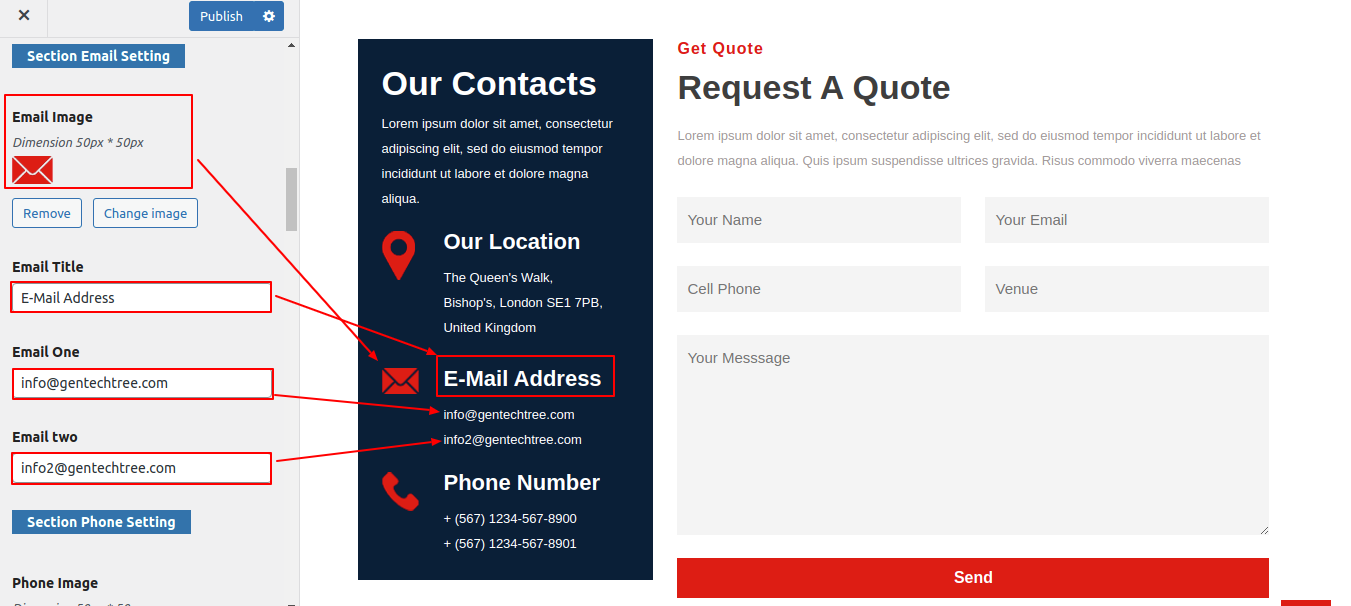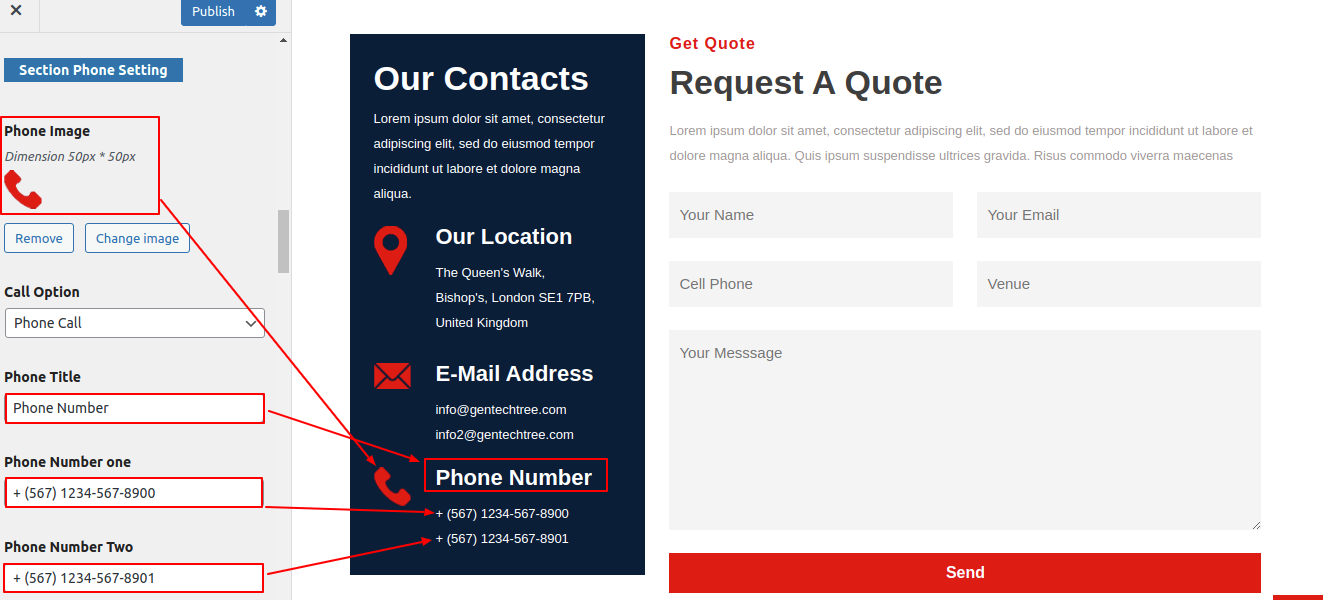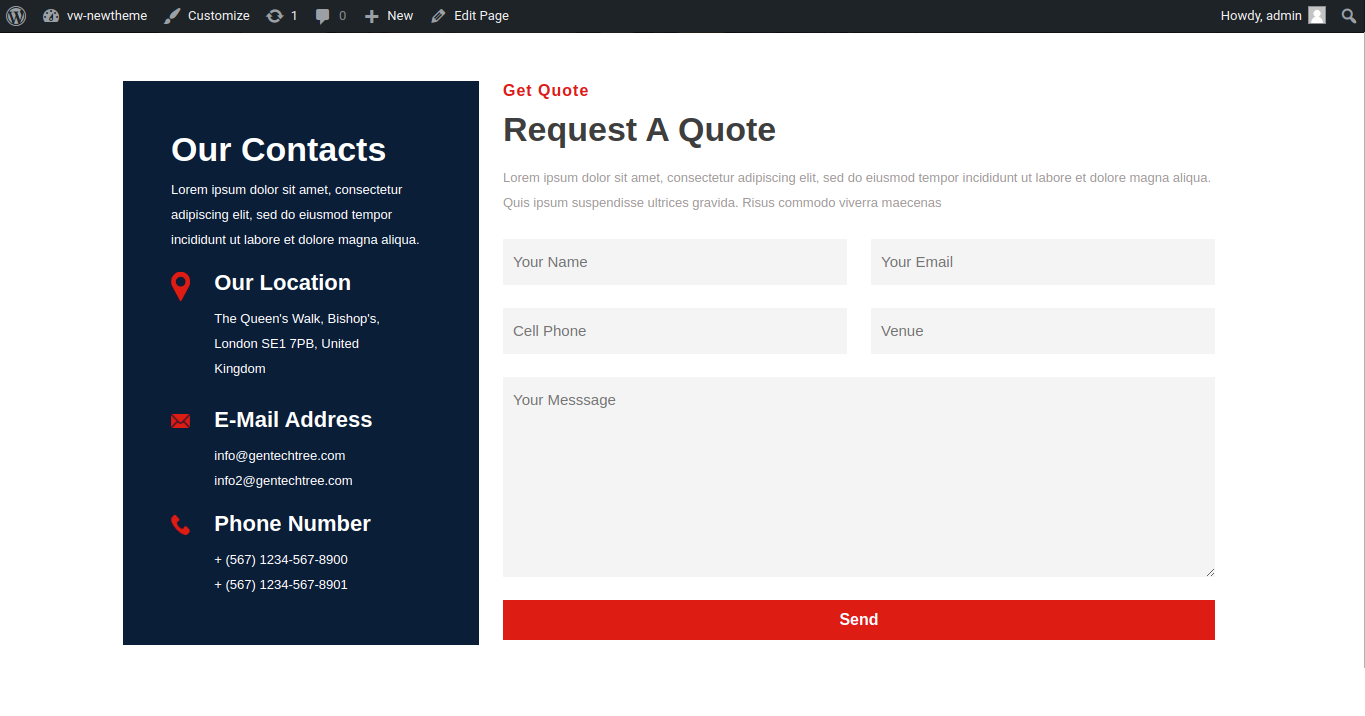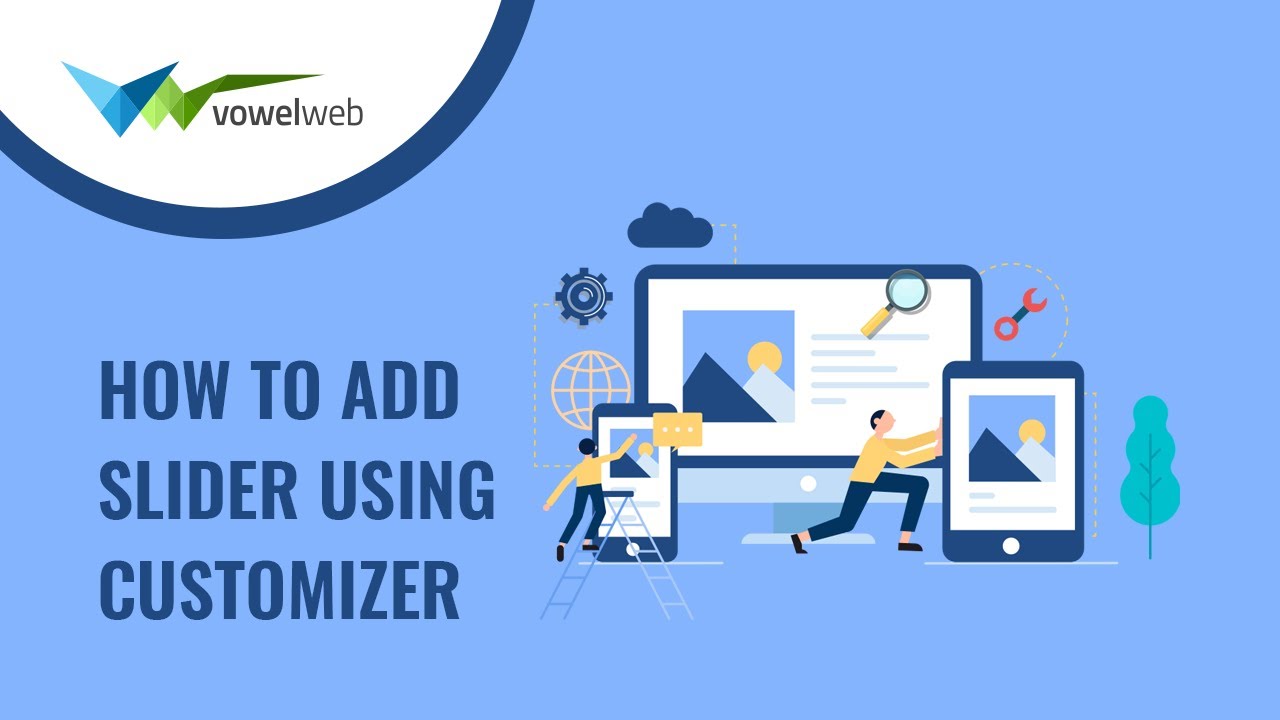System Requirements
To get the most out of the Ecommerce Watch Store Pro theme, we recommend that your web server have the following minimal system settings.
- WordPress 6.4 or Above
- PHP 7.4 and Above
- MySQL 5.6 (or greater) | MariaDB 10.0 (or greater)
- Need php ini file configration -
- post_max_size = 256M
- upload_max_filesize = 256M
- max_execution_time = 5000
- max_input_time = 5000
- memory_limit = 1000M
Introduction
Thank you for buying our WordPress Theme. The complete procedure to configure and manage a WordPress Website from the beginning is shown in this documentation in different portions.
What is WordPress CMS?
WordPress is an open source tool which is based on PHP and MySQL to create websites. It is a completely free content management system(CMS) and a strong blogging platform. With this CMS, you can develop websites and solid online apps. You hardly require any knowledge or technical capability to manage it. WordPress has become the most accepted website development software available because of it’s varied aspects like it’s easy usage and flexibility. Learn More
What is a Wordpress Template?
A WordPress template serves as the skin for websites built using the WordPress content management system. A WordPress template is incredibly simple to setup. You may quickly modify the appearance of your WordPress website by installing a new template. A WordPress template comes with all the necessary source files, and you are free to change and expand it however you see fit.
Help and Support
Click here for support:
File Structure
The template package you have downloaded consists of several folders. Let's see what each folder contains:
-
Screenshots
-contains template screenshot. Not for production.
- theme -contains wordpress theme files
- "VW-Dietitians-Pro " -this folder contains all the necessary files for the theme.
- "license.txt" -contains license details
- "readme.txt" -contain information about theme images path, font use and usage script
Template Installation
Installing a template is a simple procedure.
Within the WordPress interface, all activation procedures can be completed. It facilitates a quick and comfortable procedure.
There are two methods to complete the installation process.
To install a theme using WordPress admin, follow these steps:
First, log in to your WordPress admin dashboard.
1.Next, navigate to the "Appearance" menu and select "Themes."
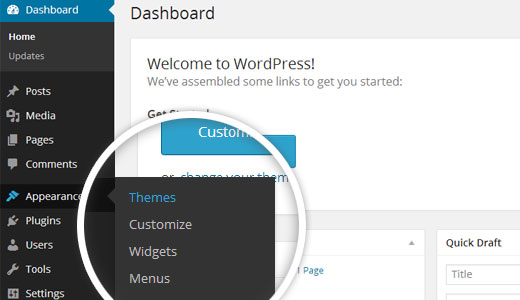
2. Once you are on the themes page, click on the "Add New" button located at the top of the page.
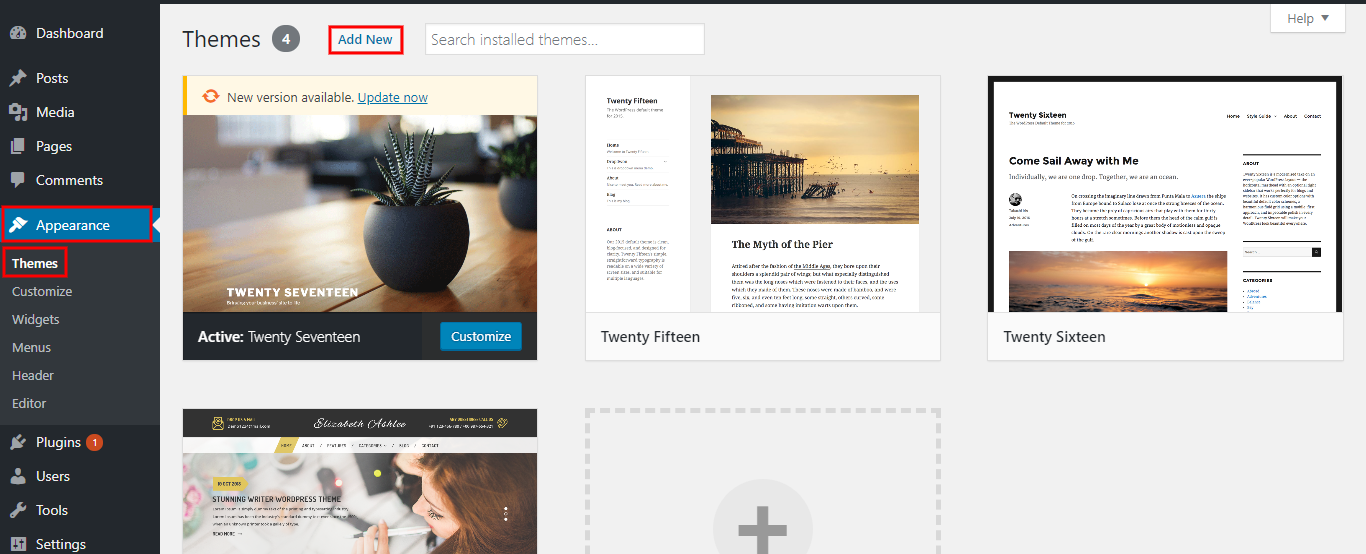
3. Choose the button for theme upload.

4. Click the "Browse" button, keto-organic-pro.zip theme, and then click the "Install Now" button.

5.WordPress will now proceed with installing your selected theme, and upon completion, you will see a success message that includes options to activate the theme or preview it live. Congratulations! Your theme has been successfully installed and set up.
2-Install a Theme using FTP
The theme can be uploaded using FTP, which is your second installation option. To use this method, first log into your website using FTP and navigate to the wp-content/themes folder. Just extract the Total folder from the theme file you got and upload it to your server.

To activate Total, first log into your WordPress website and go to Appearance >> Themes.
Section Color/Font Pallette
The method of changing the colour or font is quite simple. These choices are available in all customizer areas. It is a comprehensive graphic that demonstrates the typeface and colour palette. You can change the colour and font of the headings, paragraphs, and buttons with a single glance or click.
Depending on the number of options accessible in each part, there is an option to change the colour scheme for the headings, title/text, paragraph, button text, and button background.
Default Color/Font settings


Theme Wizard
To import content using Theme Wizard, adhere to these procedures.
1) Go to Dashboard >> Getstarted
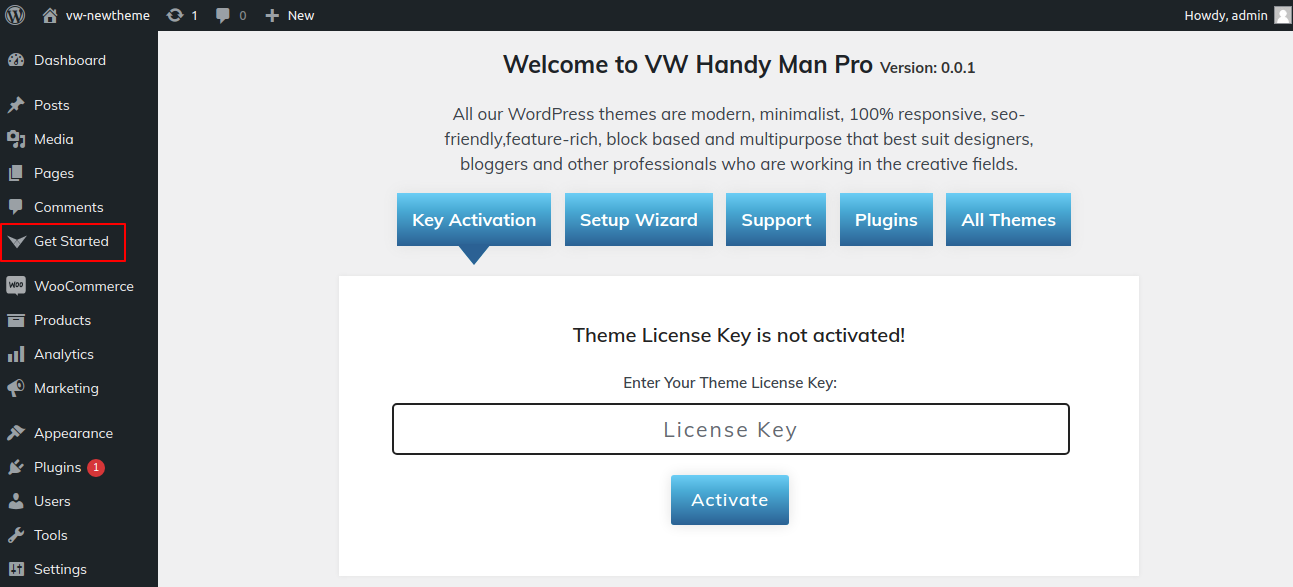
2) Put in your key.

Refer video for Licence key activation:

3) After selecting Setup Wizard, click Start Now.
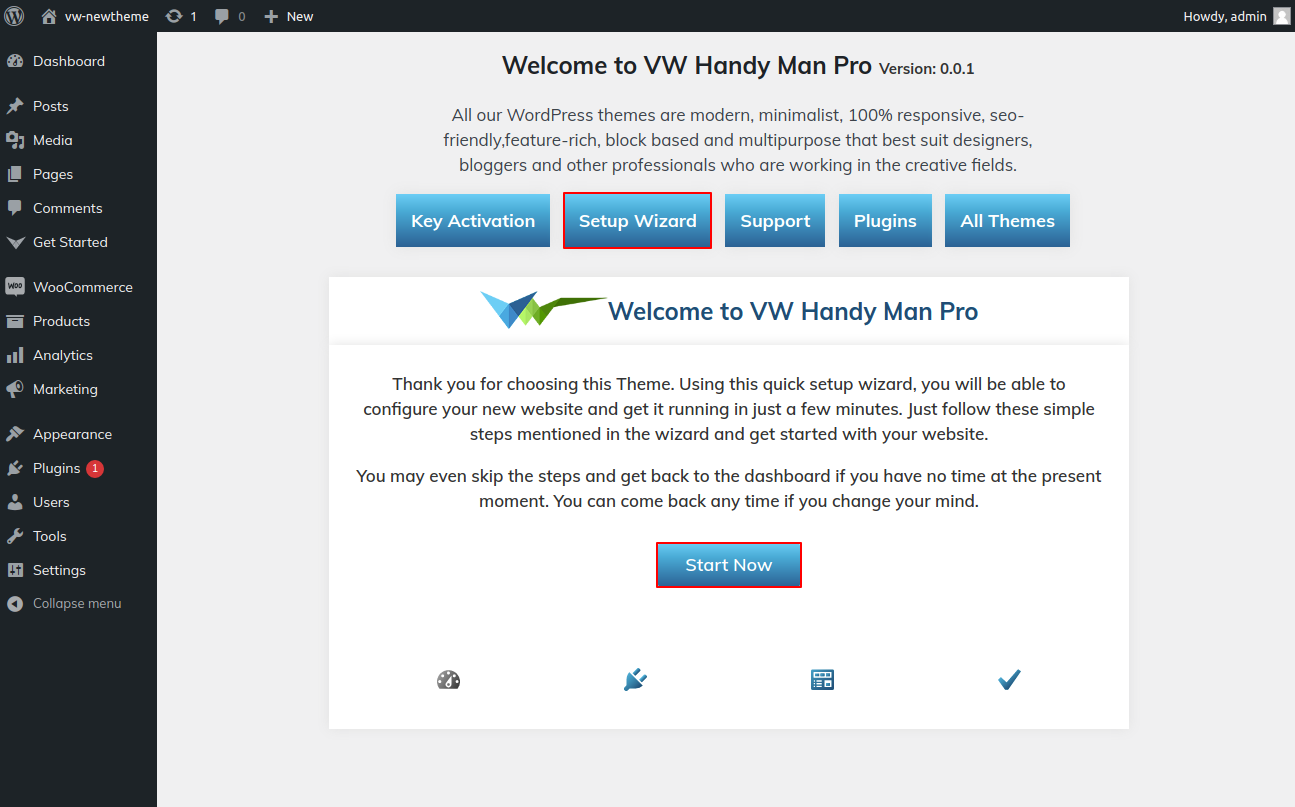
4) Installing a plugin.
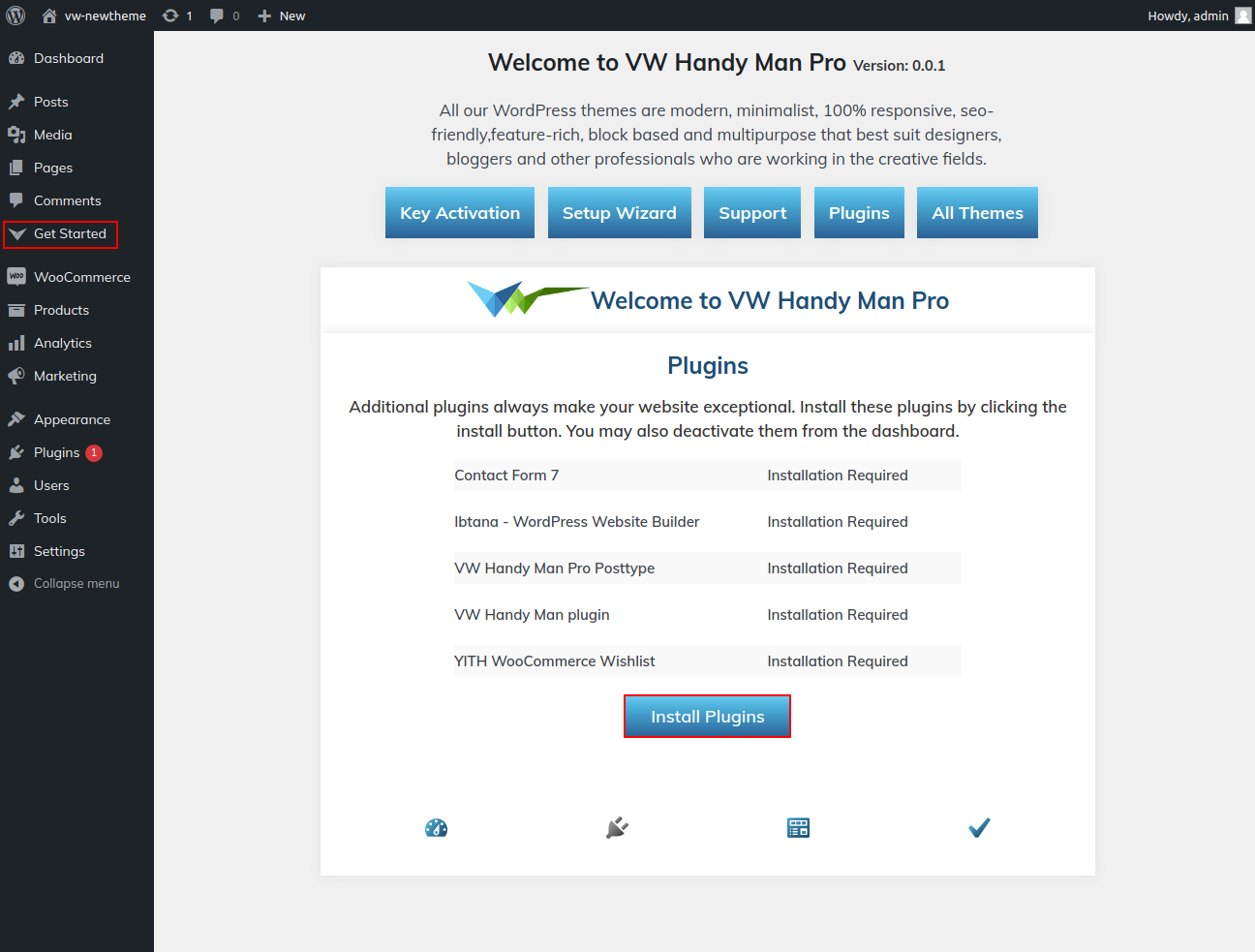
5) Your demo material based on Customizer and Gutenberg should be imported.

For setting up your demo content based on, you can refer to this video.
Theme Setup
The index page with the most recent post will be visible when you access your site after activating the theme. You must now configure the home page design such that it displays the entire demo area on your front page.
6.1 Setup Home Page Template
Set up your home page by following these instructions.
-
To set a template for a new page, navigate to the Dashboard, click on Pages, and then select Add New Page. Give the page a name, such as "Home," or any other desired label. Next, choose the "home-page" template from the dropdown menu of available templates.
- 2. Set the front page: Go to Setting -> Reading --> Set the front page display static page to home page


When you're finished, you can view the entire demo collection on the top page.
6.2 Topbar
1. Go to Dashboard >> Appearance >> Customize >> Topbar


The result will appear as shown.

Refer video for create and setup menu:

6.3 Header
1. Go to Dashboard >> Appearance >> Customize >> Header

2.Follow these instructions for the Menu Section.
Go to Dashboard >> Pages >> Add New.

Repeat these instructions for additional pages.
Go to Dashboard >> Appearance >> Menu.

3. Observe these steps for the Icon Section.
Go to Appearance >> Customize >> Theme Settings >> Header.

The result will appear as shown.

Refer video for create and setup menu:

6.4 Setup Slider
Go to Appearance >> Customize >> Theme Settings >> Slider Settings.
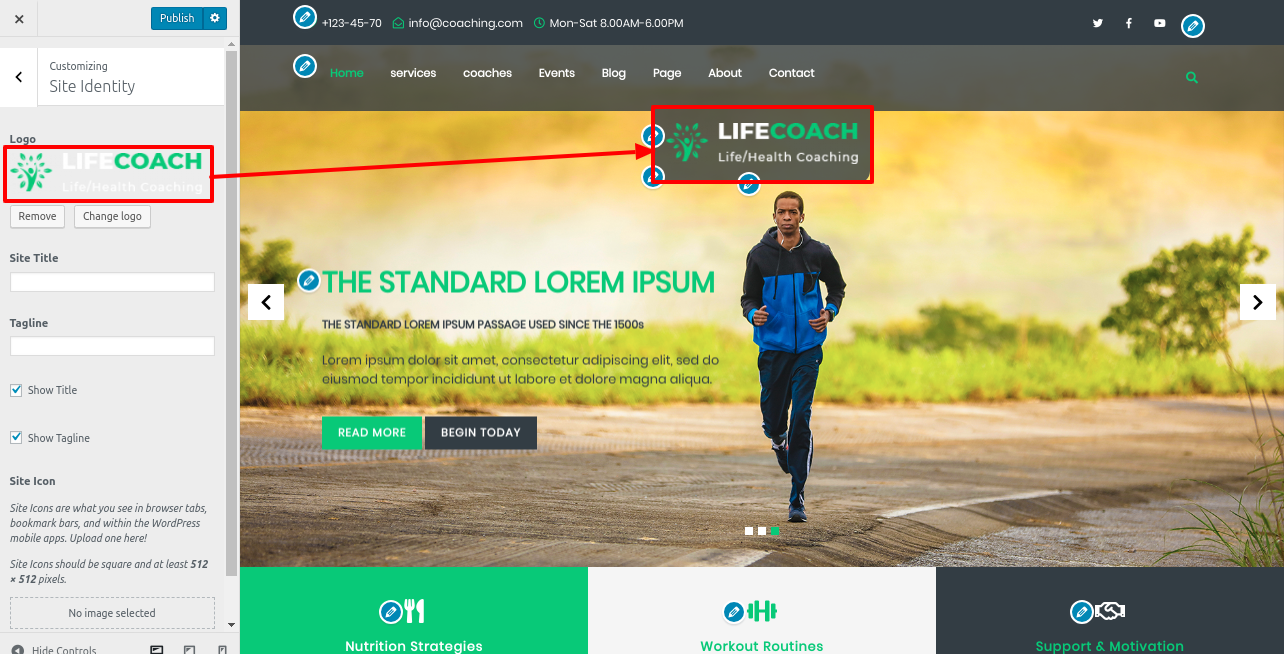

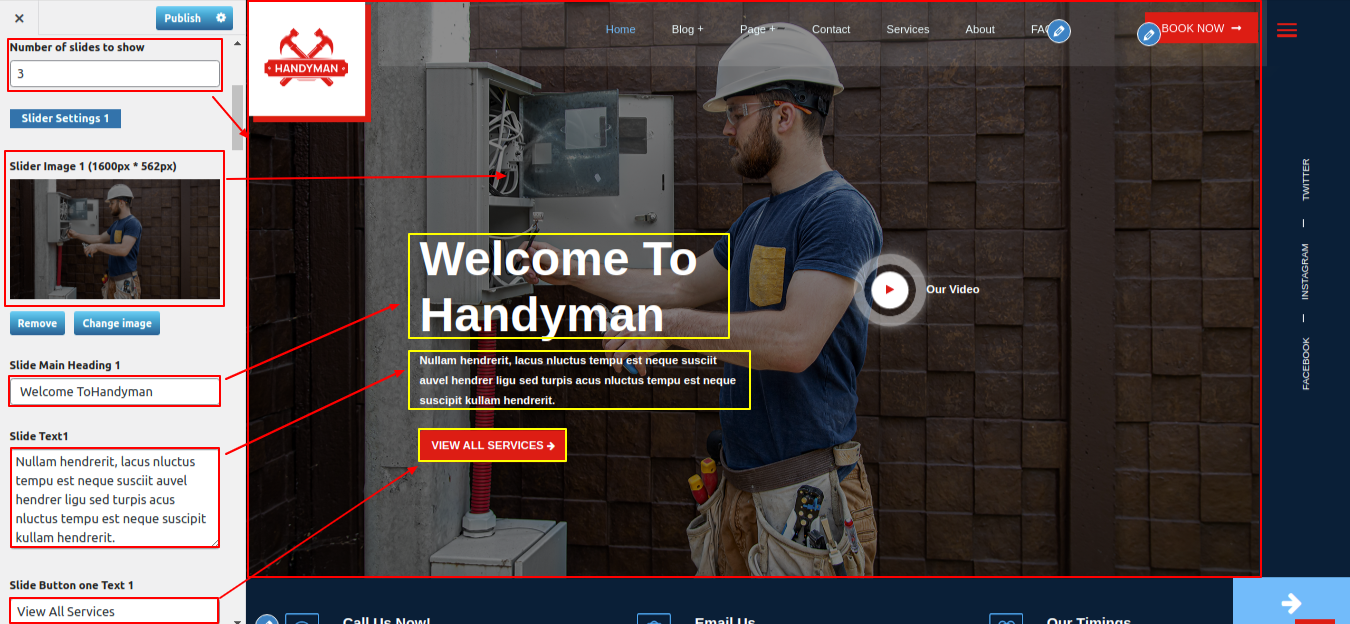
The result will appear as shown.

Refer video for Setup slider:
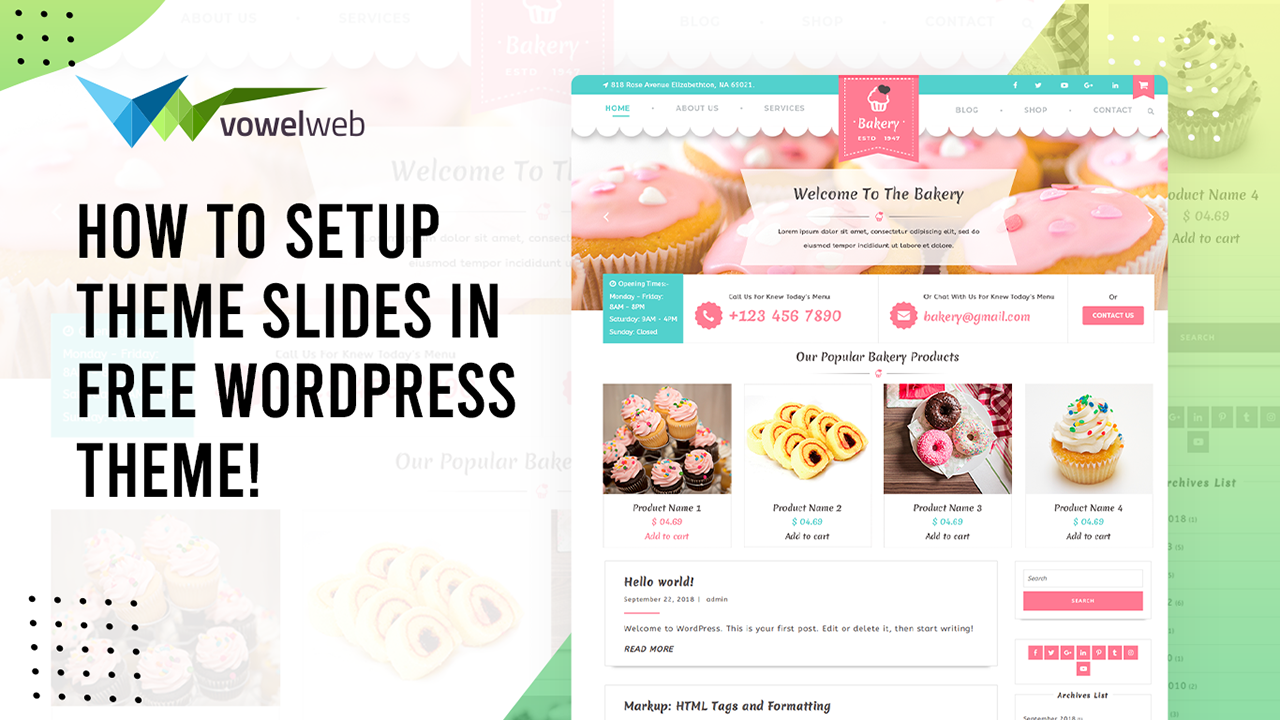
6.5 Setup Contact Us Now Section
Create the Contact Us Now Section first.
Appearance >> Customize >> Theme Settings >> Contact Us Now Section.
The result will appear as shown.

6.6 Setup About Us
to configure this part.
Go to Appearance >> Customize >> Theme Settings >> About us.


The result will appear as shown.

6.7 Setup Get In Touch Section
Go to Appearance >> Customize >> Theme Settings >> Get In Touch Section.


The result will appear as shown.

6.8 Setup Program Offers Section
We need to add and enable the Woocommerce plugin first before moving on to the Program Offers Section.
Upon activation of this plugin, a Woocommerce option shows in the dashboard. Products will be available in the interface.
Go to Dashboard >> Products >>Categories .See the screenshot below for additional information.

Addition of Goods
In order to add Items to Categories,
Go to Dashboard >> Products >> Add New .See the screenshot below for additional information.

Go to Appearance >> Customize >> Theme Settings >> Program Offers Section.

The result will appear as shown.

6.9 Setup Fitness and Nutrition Section
Dashboard >> fitness Nutrition >> Add New

Dashboard >> Appearance >> Themes Setting >> Fitness and Nutrition Section

The result will appear as shown.

6.10 Setup Our Team Section
Go to Dashboard >> Our Team >> Add New

Go to Appearance >> Customize >> Theme Settings >> Our Team Section.

The result will appear as shown.

6.11 Setup Healthy Recipes Section
Go to Dashboard >> Healthy Recipes >> Add new.
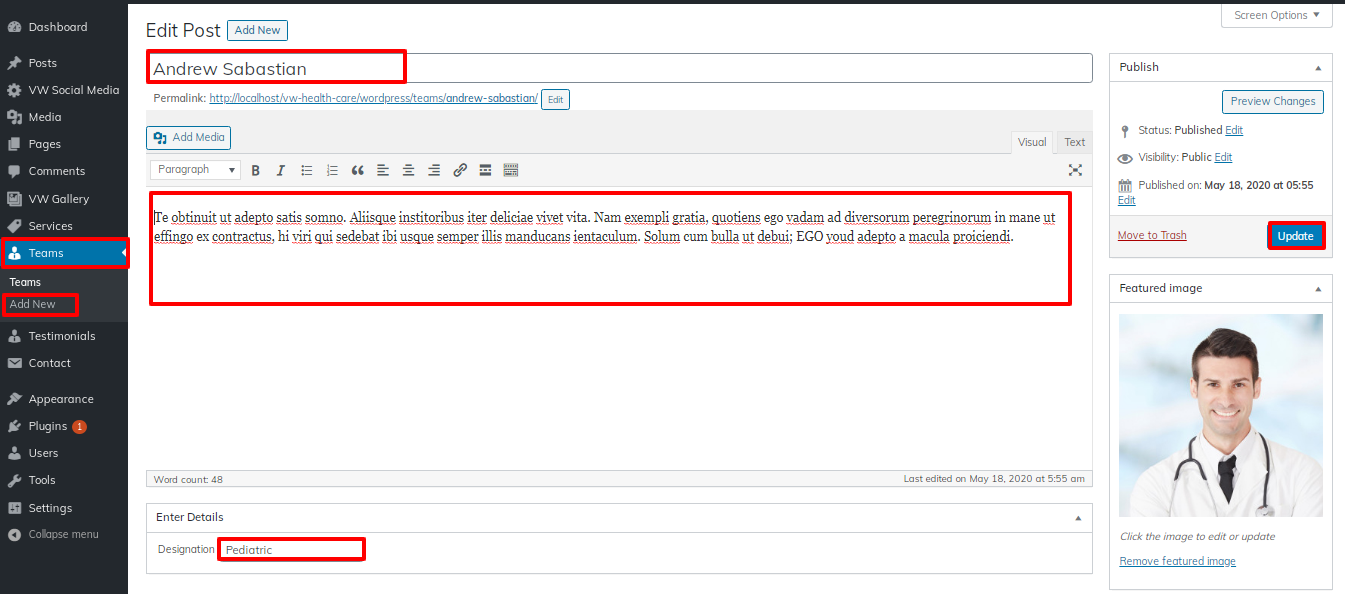

The result will appear as shown.
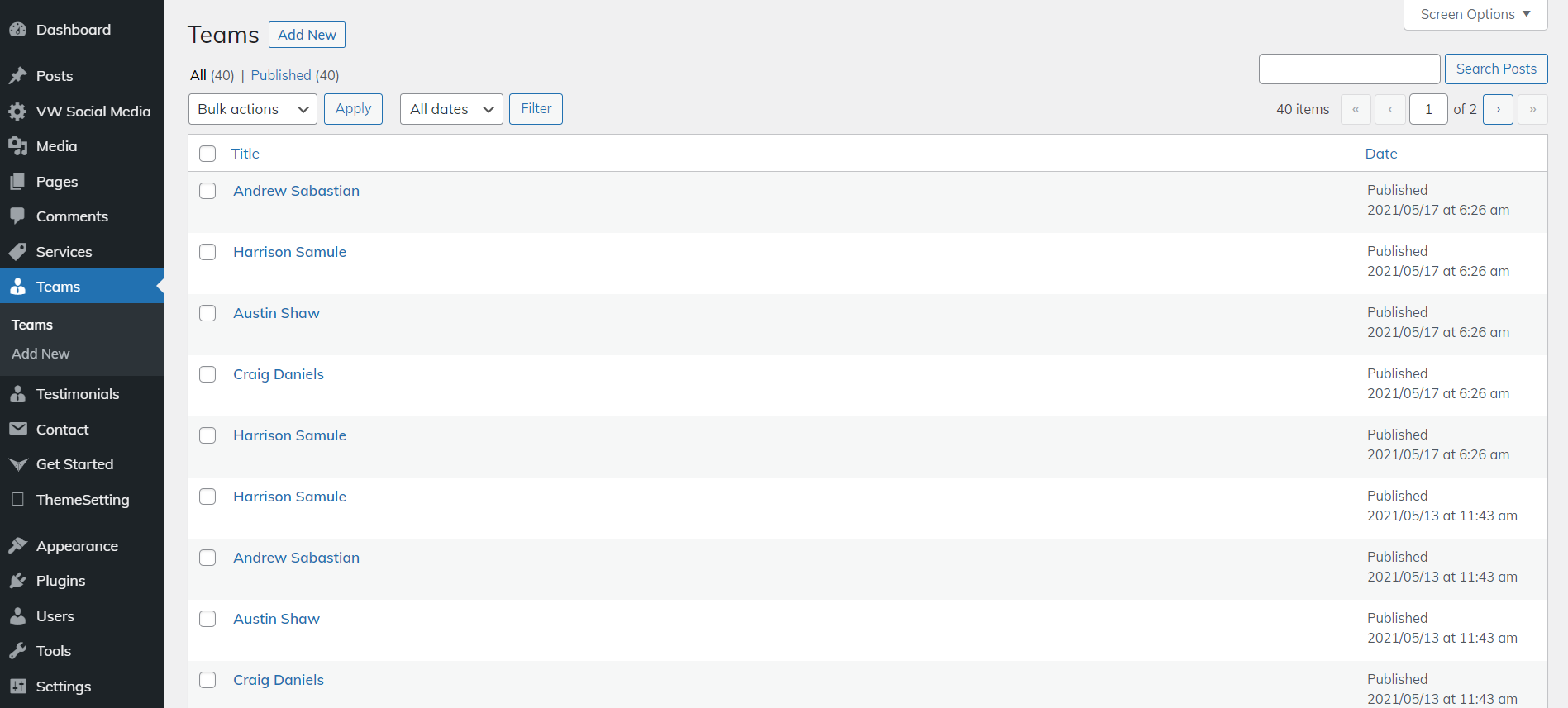
6.12 Setup Testimonial Section
Go to Dashboard >> Testimonial >> Add New

Go to Appearance >> customizer >> Theme Setting >> Testimonial Section

The result will appear as shown.

6.13 Setup Pricing Plans Section
Go to Appearance >> Customize >> Theme Settings >> Pricing Plans Section.


The result will appear as shown.

6.14 Setup Recent Blogs Section
Go to Dashboard >>Post >> Add New

Appearance >> Customize >> Theme Setting >>Recent Blogs Section

The result will appear as shown.

6.15 Setup Newsletter Section
Go to Dashboard >>Contact >> Add New
Look at the screenshot down below.

Go to Appearance >> Customize >> Theme Settings >>Newsletter

The result will appear as shown.

6.16 Setup Setup Footer Section
To establish the Body Section
For conventional Widgets, you must first upload and activate the plugin.
There are four columns in the footer widgets. Each column may display a different element. These sections will be constructed using the widget section of the admin panel.
Go to Appearance >> Widgets.
See the screenshot below for adding widgets to the footer

Go to Appearance Customize Theme Settings Footer Widgets. .

The footer of the page will look as displayed.

6.17 Footer Text
To make Footer Text visible on the homepage.
Go to Appearance >> Customize >> Theme Settings >>Footer Text.

In this way, footer text can be added.
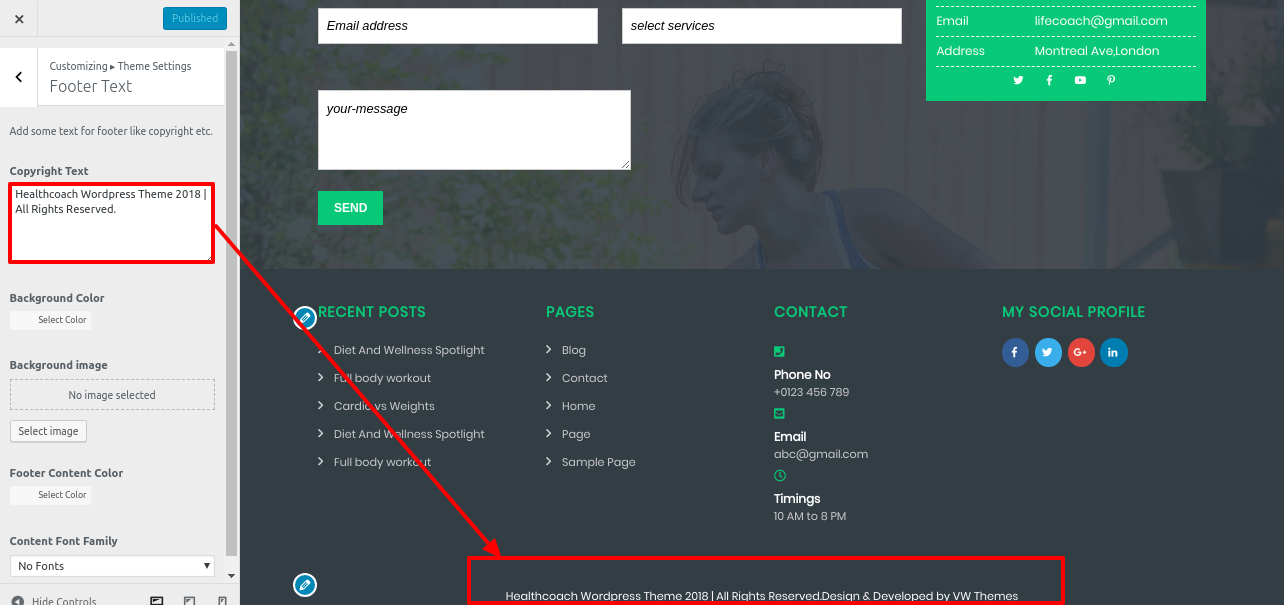
6.17.1. Inner Pages
6.18 About Us
Go to Dashboard >> Pages >> Add New
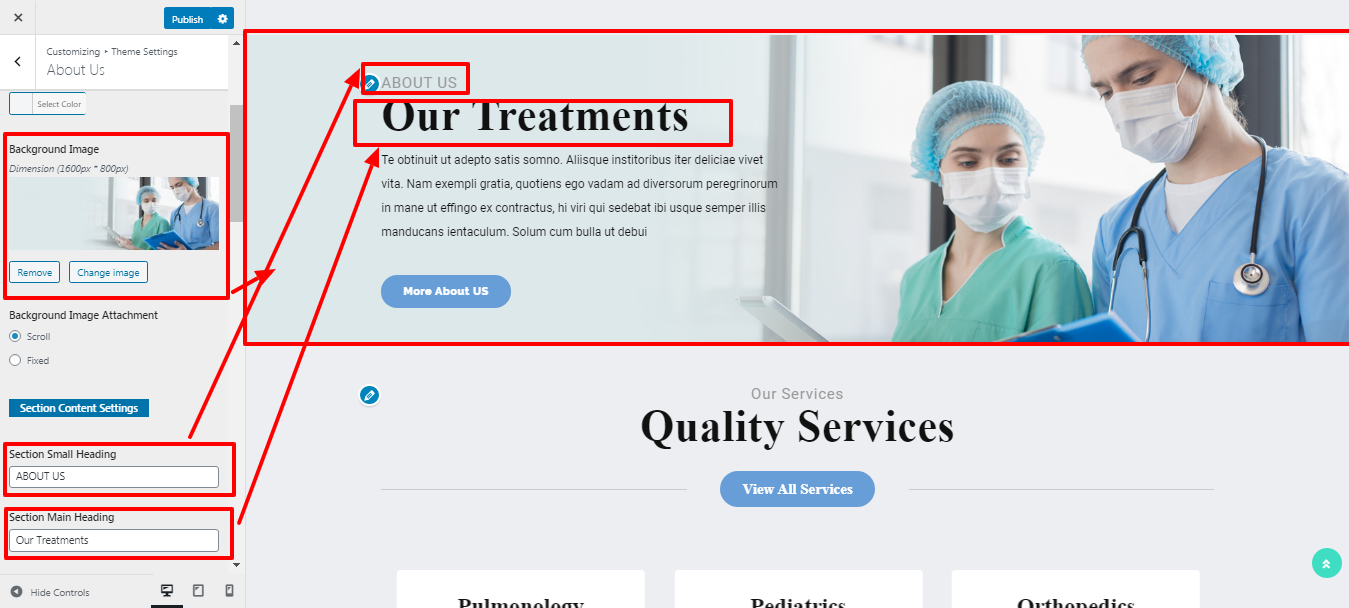
Go to Appearance >> Customize >> Theme Settings >>About Us page - About Us Section.

The result will appear as shown.

6.19 About Us page - Get In Touch Section
Go to Appearance >> Customize >> Theme Settings >>About Us page - Get In Touch Section.


The result will appear as shown.

6.20 About Us page - About Us Video Section
Go to Appearance >> Customize >> Theme Settings >>About Us page - About Us Video Section

The result will appear as shown.

6.21 About Us page - Pricing Plans Section
Go to Appearance >> Customize >> Theme Settings >>About Us page - Pricing Plans Section


The result will appear as shown.

6.22 Page No Sidebar
Deshboard>> Page >> Add New

The result will appear as shown.

6.23 Pages With Left Sidebar
Deshboard>> Page >> Add New

Deshboard>> Post >> Add New

The result will appear as shown.

6.24 Pages With RIght Sidebar
Deshboard>> Page >> Add New

Deshboard>> Post >> Add New

The result will appear as shown.

6.25 Error 404
Deshboard>> Page >> Add New

The result will appear as shown.

6.26 Blog With No Sidebar -
- Step 1. Go to Dashboard >> Page
- Step 2.Click Add New button
- Step 3 - Add Page Name
- Step 4. select Blog with No Sidebar template at right bottom of page
- Step 5. Click publish button

Deshboard>> Post >> Add New

Deshboard>> Appearance >> Theme Setting >> Post Setting



The result will appear as shown.

6.27 Blog With Left Sidebar -
- Step 1. Go to Dashboard >> Page
- Step 2.Click Add New button
- Step 3 - Add Page Name
- Step 4. select Blog With Left Sidebar template at right bottom of page
- Step 5. Click publish button

Deshboard>> Post >> Add New

Deshboard>> Appearance >> Theme Setting >> Post Setting



The result will appear as shown.

6.28 Blog With Right Sidebar -
- Step 1. Go to Dashboard >> Page
- Step 2.Click Add New button
- Step 3 - Add Page Name
- Step 4. select Blog With Right Sidebar template at right bottom of page
- Step 5. Click publish button

Deshboard>> Post >> Add New

Deshboard>> Appearance >> Theme Setting >> Post Setting



The result will appear as shown.

Refer video for installation of Contact form 7 Plugin:

Refer video for create latest Post section:

Page Templates and sidebars
Page Templates
- Home Template (the default Home template)
- Default Template (the default page template with a right sidebar position)
- Page (Left Sidebar) (a page templates with left sidebar position)
- Page (Right Sidebar) (a page template with right sidebar position)
- Blog (Full Width) (a blog templates with one column without sidebar)
- Blog (Left Sidebar) (a blog templates with left sidebar position)
- Blog (Right Sidebar) (a blog template with right sidebar position)
- Contact Template (the default Contact template with no sidebar position)
Post, Categories and Post Formats
Adding category
For further details on adding categories, look at the following article: http://codex.wordpress.org/Manage_Categories_SubPanel

- Access your WordPress Administration Panel by logging in (Dashboard).
- Click the Posts tab.
- After doing that, selectCategories for blog articles.
- Your new category's name should be typed in.
- Click the Add New Category option after that.
- Choose Publish from the menu.
Creating a Blog post
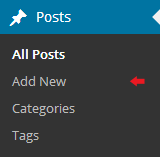
- Access your WordPress Administration Panel by logging in (Dashboard).
- In the Posts tab, click.
- To add a New Tab, click it.
- Enter the text for your post. Please click the following link for further details on adding posts.http://codex.wordpress.org/Posts_Add_New_SubPanel.
Shortcodes
The powerful content creation tool known as a shortcode is found at http://codex.wordpress.org/Shortcode. Using shortcodes is simple. Make sure that Visual editing mode is selected first.

Refer video for Create Pages Using Shortcode:

Custom Widgets






